As Magic heads into its thirtieth year (an absolutely wild achievement for any game), Hipsters is celebrating its tenth (which feels even wilder to me, since I remember when Hipsters was a blog dedicated exclusively to events at our local game store). So, in the spirit of things, let’s do a bit of a retrospective on the past decade. And since it’s me, I’d like to focus on what I care about most: draft. So, what were the best Limited formats of the past decade?
Before we begin, I must emphatically state that this is my opinion and nowhere in the same galaxy as objective fact. Every format is someone’s favorite, and everyone’s favorite format is someone else’s least favorite. People have strong nostalgia for when they began playing or leveled up, and that’s great! Just because your favorite format didn’t make this list, or your most reviled format did, doesn’t make you wrong—it just means you disagree with me.
So, with all that out of the way, here is my utterly subjective top 10 list of the past 10 years’ worth of Limited formats!
10. Modern Masters 2013
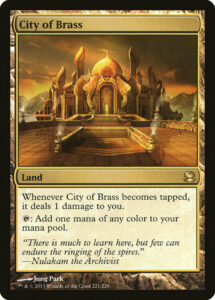
More than other set on this list, this is probably more of a personal favorite than a widespread one. Modern Masters 2013 had the most rigid archetypes of any Masters set, as there was only so much crossover you could have been a UR Splice/Storm deck, a WR Giants deck, and a BR Goblins deck. Still, this format was a game-changer, both for Magic as a whole and for me.
MMA2013 launched the Masters line, giving Magic players one of the best avenues for reprints as Modern and Commander exploded in popularity. For me, this was a survey of a Magic decade I’d mostly missed, letting me get a taste of what Lorwyn and Kamigawa and Shards of Alara had to offer. It also featured the first massive Grand Prix Vegas, an experience I’ll never forget attending.
9. Eldritch Moon
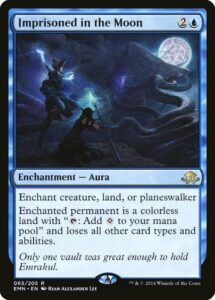
This format was a ton of fun. Emerge was a surprisingly compelling mechanic, where every creature could be a ritual into an Eldrazi that offset your card disadvantage. You could draft Delirium, blue-red spells, WB aura recursion—there just a lot of innovation and addition to the already strong Limited format that Shadows over Innistrad provided.
8. Unstable
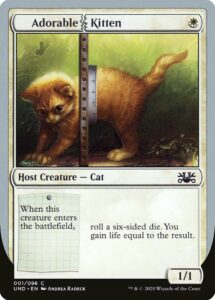
This probably was the least played format on this list, and that’s a shame. Unstable was deep and complex despite its obvious wackiness. I’d railed against Un-sets when Unstable was announced, but I gave it a try and took back (almost) everything mean I’d ever said about silver border. (I still don’t like Unhinged’s use of butt jokes, fractions, and Gotcha.) Unstable is such a good exploration of mechanics that didn’t quite work within Magic’s tournament rules but are comprehensible to human brains.
Unstable’s success is probably part of the reason why we’re seeing more silliness in Magic, and players’ reticence to play with the cards in Commander (as well as Un-sets’ reputation of being only about pretty basic lands for collectors) is certainly why Unfinity is getting rid of silver borders entirely. This was the gift I never thought I wanted, but it got me through Ixalan season.
7. Mystery Booster
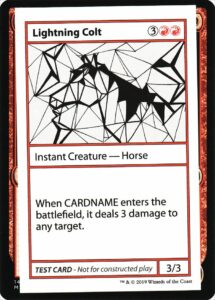
If you love chaos draft, or finding unusual card combinations, playing with bonkers playtest cards, or just reliving gameplay with beloved old Limited cards, Mystery Booster is the format for you. I have nothing but praise for Mystery Booster draft. Some of the wildest stories I have come courtesy of its playtest cards. And also, I somehow qualified for the Players Tour via Mystery Booster.
6. Ultimate Masters
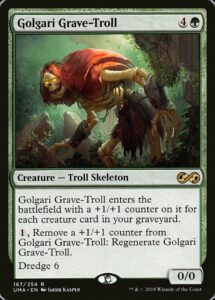
After the lackluster performances of Iconic Masters and Masters 25, the Masters line—my favorite product line Wizards made—was to be retired. It went out on an absolute banger. Ultimate Masters was a phenomenal love letter to graveyard strategies, be they Spider Spawning, Unburial Rites, or Rise from the Tides. You could go off with Young Pyromancer, turn Frantic Search into a 0 mana Divination that turned Fiery Tempers into Lightning Bolts, and give Wild Mongrel another chance to strike terror into the hearts of blockers.
I love this format so much that I created a cube as a love letter to it, and I’ll be sharing it at CubeCon next month.
5. War of the Spark
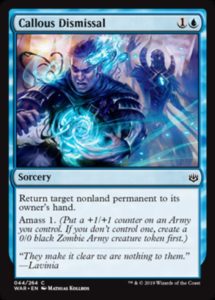
Moreso than any other Standard-legal set, War of the Spark felt like cube to me. With a Planeswalker in every pack, everyone had access to powerful cards. But while the format was full of powerful cards, few were unanswerable bombs. The plethora of Planeswalker interaction and card advantage meant that you could beat a Sarkhan, Nissa, or even Ugin.
Amass was a simple but pretty fantastic spell mechanic that let you build creatureless decks that could play to the board (Callous Dismissal is my favorite Man-o’-War), but was also the only token mechanic that was still weak to spot removal. This format was contentious, but I adored the gameplay.
4. Modern Horizons 2
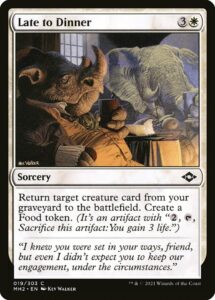
Say what you will about Modern Horizon’s effects on Modern, this format was sweet. It was the first set to really grab me since the pandemic began and it rekindled my excitement for Limited. The set strikes a pretty perfect balance between having well-defined archetypes in each color pair, crossovers across most color pairs, and oodles of card interactions that open up new play patterns. I wish more sets could have that incredible dynamism—that’s super hard to do for any set, but especially for Premier sets which have far more reasonable budgets for complexity and power level.
3. Kamigawa: Neon Dynasty
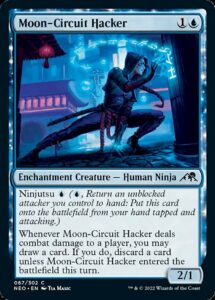
I had no love or nostalgia for Kamigawa. Nor do I have much affection for cyberpunk. But just like with Unstable, Neon Dynasty won me over with its simply incredibly gameplay. Neon Dynasty has both linear and modular archetypes, ample fixing to let you cross between them, tense combat thanks to Ninjutsu, and manages to carefully balance both complicated mechanics and incredibly wordy cards without being overcomplicated. I don’t think there’s anything controversial about having it on this list, though I’d wager many folks would wish I’d put it even higher.
2. Dominaria
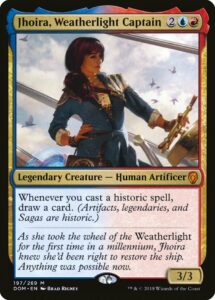
Dominaria had a lot in common with Neon Dynasty. Both sets rehabilitated old worlds with lots of baggage. Both were quite restrained in their mechanics. Both had good fixing, card advantage aplently, lots of legendaries, and sagas retelling tales from 20+ real life years prior. Perhaps it’s the game designer in me or the kid who grew up playing sets on Dominaria, but I give slightly more credit to Dominaria for pioneering these decisions than I do to Neon Dynasty for executing on them so well. Both of those sets were truly amazing and I can’t wait to see what follows next in their wake.
1. Khans of Tarkir
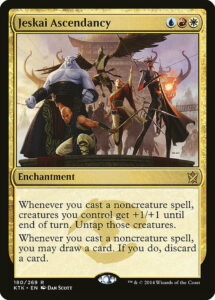
This is certainly outing myself as a Magic boomer, but Khans gets my award for format of the decade. Morph just made combat so tense. It provided bridges across every archetype, letting you blend any of the five tricolor clans together or hedge during the draft. It provided mana sinks to every deck, something that’s essentially universal nowadays but was hard to come by a decade ago. And that’s just one mechanic!
The five new mechanics were all pretty great—Wizards managed to make Delve work in both Limited and Standard (which is a feat and a half). They created Prowess (which quickly became a celebrated evergreen mechanic before slowly fading away) and Raid (which returned four years later as Ixalan’s pirate mechanic). Outlast is the rare card advantage mechanic that just plays fairly. And then there was Ferocious, an unassuming mechanic that has somehow gone on to return (un-keyworded) more often than every other non-Prowess mechanic in the set combined.
Khans of Tarkir is awesome, I fully believe it stands the test of time, and I look forward to the set that dethrones it (even if for many people reading this, Neon Dynasty or Dominaria already did that).
Zachary Barash is a New York City-based game designer and the last commissioner of Team Draft League. He designs for Kingdom Death: Monster, has a Game Design MFA from the NYU Game Center, and does freelance game design. When the stars align, he streams Magic (but the stars align way less often than he’d like).

